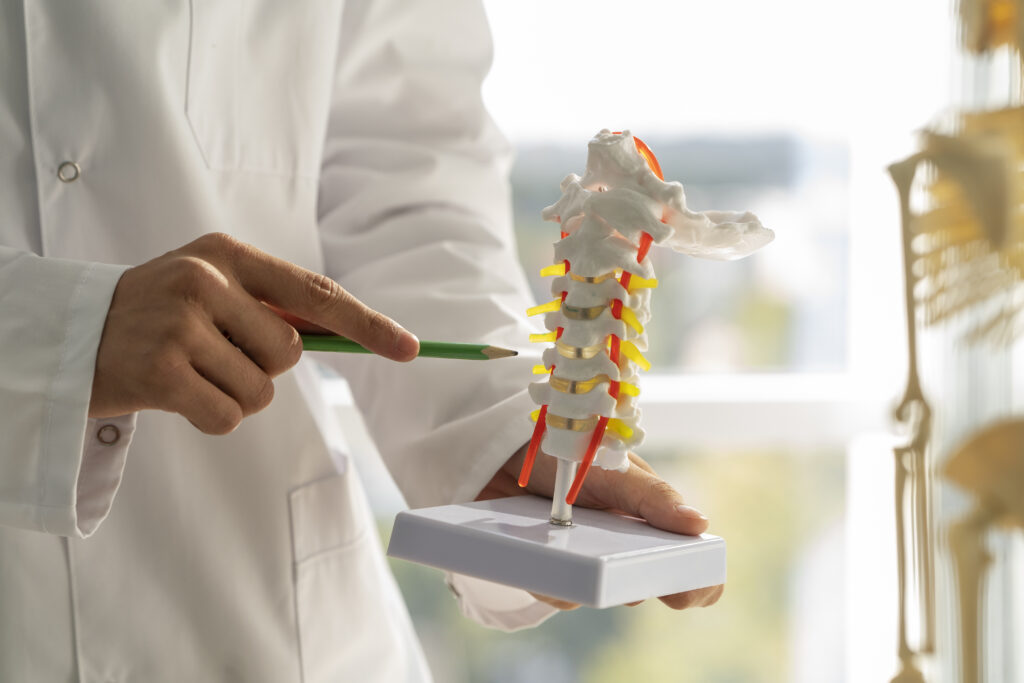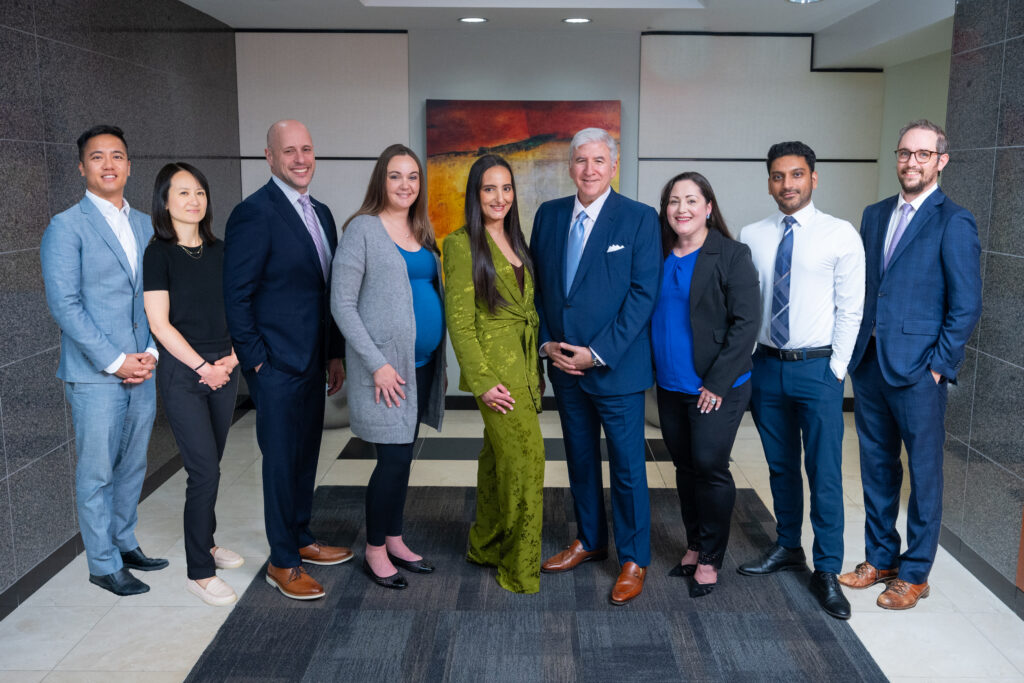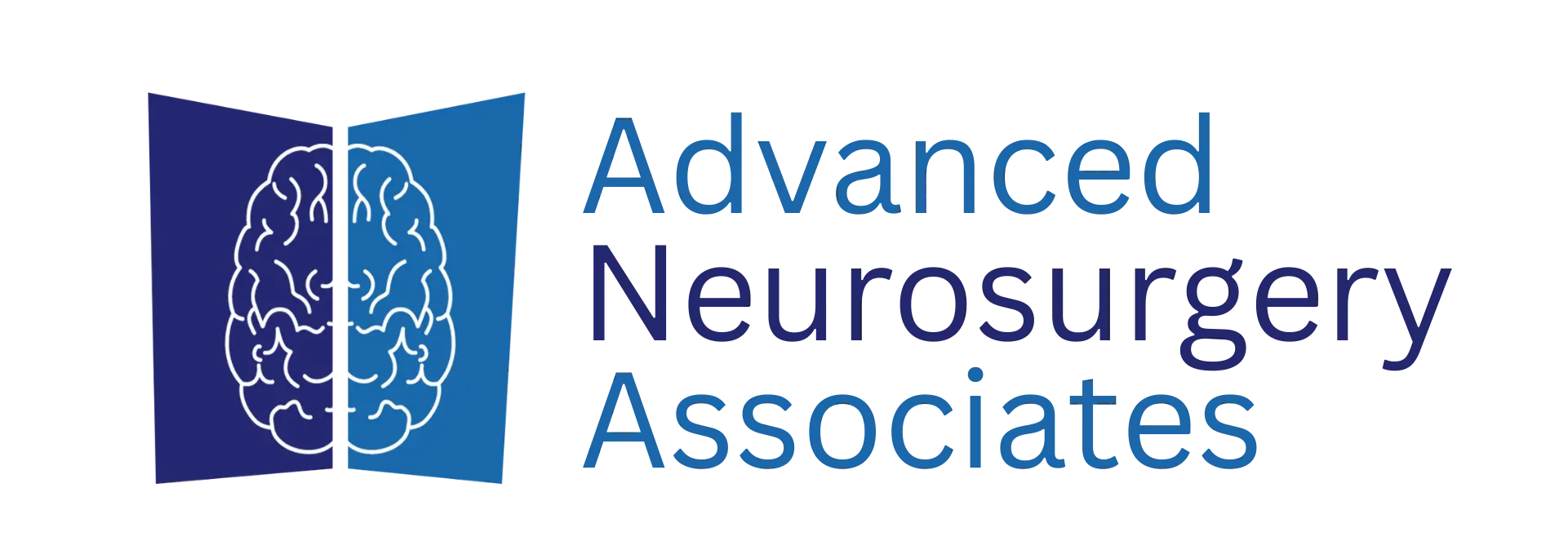Disc Herniation
Specialized Care by Board-Certified Brain & Spine Surgeons of New Jersey

What Is Disc Herniation?
A disc herniation—commonly known as a “slipped” or “ruptured” disc—occurs when the soft inner core of a spinal disc pushes through its tougher outer layer. This can press on nearby nerves, causing pain, numbness, or weakness. Herniated discs most often occur in the lower back (lumbar spine) or neck (cervical spine). Herniated discs can worsen over time. If you suspect you may have a herniated disc, don’t wait — visit an orthopedist for an accurate diagnosis and explore herniated disc treatment in New Jersey, including both non-surgical and surgical options.
What Are the Symptoms of a Herniated Disc?
A herniated disc can occur in the cervical (neck), thoracic (mid-back), or lumbar (lower back) region. While some individuals with a herniated disc are asymptomatic, many others experience symptoms that may require professional care or herniated disc surgery in Rutherford, NJ. Common symptoms include:
- Localized or radiating back or neck pain
- Numbness or tingling in the arms or legs
- Muscle weakness or difficulty walking
- Pain that worsens with movement, coughing, or sitting
- In severe cases: loss of bladder or bowel control (medical emergency)
Risk Factors for a Herniated Disc
Several lifestyle habits and biological factors can increase your risk of developing a disc herniation:
- Heavy Lifting: Straining the spine with isolated or repeated heavy lifting can cause disc damage.
- Excess Weight: Obesity adds pressure to spinal discs, accelerating wear and tear.
- Sedentary Lifestyle: Poor muscle tone from inactivity places added stress on spinal structures.
- Poor Posture: Misalignment over time can increase disc pressure and degeneration.
- Smoking: Nicotine and carbon monoxide reduce blood flow, weakening disc integrity by limiting nutrient absorption.
- Aging: Disc dehydration and reduced flexibility with age increase susceptibility to injury.
- Male Gender (Ages 20–50): Men in this age group are statistically more prone, possibly due to occupational or physical strain.
Let me know if you’d like a shortened version for use as quick-reference bullet points.
Grade 1 Concussions
Grade 1 symptoms tend to resolve themselves. The best way to treat a Grade 1 concussion is by simply resting and not rushing back into the activity which caused it. However, it is recommended for people who suffer from multiple Grade 1 concussions to receive additional medical evaluation.
If a vision problem occurs, or any other concerning symptom, you should consult a physician immediately.
Grade 2 Concussions
If there is headache pain once the effects have lingered past a half hour, aspirin or ibuprofen can be taken. However, if the condition worsens over time, medical attention is required immediately.
Twenty-four hours of close observation by a family member or medical staff is required to make sure that additional symptoms don’t develop or current conditions don’t get worse.
Grade 3 Concussions
Similarly to a Grade 2 concussion, observation is essential in assessing a Grade 3 concussion. However, in the case of a Grade 3 concussion, immediate medical attention is required.
Should the symptoms worsen in any manner (i.e. more frequent headaches, slurred speech, decreased motor skills, etc.) further medical attention will be required. It is important to look for any possible signs of brain damage, e.g. differing pupil sizes, and problems with vision and eye coordination.
Revised Concussion Treatment Guidelines
However, in 2013, the AAN issued new evidence-based guidelines regarding evaluation and management of sports concussions which were published in the journal Neurology. The new recommendations are based on a review of decades of literature and were determined by focusing on four questions established by the AAN.
They were developed by a multidisciplinary committee of experts and endorsed by a wide range of athletic, medical and patient groups. The essence of these new guidelines is that concussions and return to play should be assessed in each athlete individually. Also, there should be no set timeline for safe return to play.
The updated version recommends that suspected concussions be addressed by immediately removing athletes from the game/activity. Athletes are not allowed to return until they are evaluated by a licensed healthcare professional trained in concussion management. Return to play should only be done after all acute symptoms are gone, and even then, that return should be done slowly. The younger the athlete, the more conservative these steps should be.
Licensed health professionals trained in treating concussion should look for ongoing symptoms (especially headache and fogginess) and a history of concussions, with extra vigilance when it comes to younger athletes.
The AAN guidelines point out that concussions are a clinical diagnosis (i.e., based on signs and symptoms) and that there is no single test equipped to determine diagnostic standards. Therefore, while concussion assessment tests (including written and/or computerized versions) may be helpful tools in the diagnosis and management of concussions, they should not be relied upon as sole measures.
The seriousness of a concussion dictates what kind of treatment you should seek. Most people with concussions recover fully with appropriate treatment. Make sure there is qualified personnel at sporting events who knows how to evaluate participants for concussions. These experts have a variety of tools to determine the presence of concussions on the spot. Since a concussion can be serious, safeguarding yourself is important.
Physical Tests for Herniated Discs
Physical tests to screen for disc herniations may include:
- Range of motion tests. To look for signs of disc injury, your doctor may ask you to lean forward and backward as well as side to side.
- LaSegue test. This stretch test involves straightening out your leg and holding it at different angles to determine the location of the pain.
- Gait monitoring. This test determines whether you are having difficulty walking due to disc pain.
- Neurological tests. These tests check for muscle strength and loss of sensation, as well as reflex response.
What to Do If You Suspect a Herniated Disc
If you’re experiencing persistent back or neck pain—especially if it radiates to your limbs or causes numbness—schedule an evaluation. Early diagnosis helps prevent worsening symptoms and may avoid surgery.The orthopedist will perform a physical examination to look for signs of disc injury as well as to rule out other conditions such as a spinal cord tumor.
Diagnosis & Evaluation
Our team uses advanced imaging and clinical tests to confirm disc herniation and rule out other spinal conditions. Evaluation may include:
- Physical exam to assess strength, reflexes, and sensation
- MRI or CT scan for detailed disc and nerve imaging
- X-rays to evaluate spinal alignment and rule out fractures
Treatment Options
Non-Surgical:
- Rest & Activity Modification: Short-term rest followed by gentle movement to reduce inflammation
- Medications: Anti-inflammatories and muscle relaxants to ease pain
- Physical Therapy: To strengthen muscles, improve flexibility, and reduce nerve pressure
- Epidural Steroid Injections: For targeted pain relief in more persistent cases
Surgical:
When you cannot achieve sufficient relief from pain, numbness or weakness with nonsurgical herniated disc treatments alone, or if you are encountering a loss of bladder or bowel control, surgery is sometimes necessary. Your doctor will take into account your age, overall health and other factors to determine whether surgery is a viable herniated disc treatment for you.
- For Persistent or Severe Cases: When symptoms don’t improve with conservative care or neurological deficits develop
- Minimally Invasive Discectomy: Removal of herniated disc material with minimal tissue disruption
- Advanced Techniques: Including microdiscectomy and endoscopic spine surgery for quicker recovery and less pain
When to See a Doctor
You should seek prompt medical care if you experience:
- Pain radiating to the arms or legs
- Numbness, tingling, or weakness in the limbs
- Difficulty walking or maintaining balance
- Sudden bladder or bowel dysfunction (emergency)

Why Choose Us for Scoliosis Care
- Board-certified neurosurgeons and spine specialists
- Expertise in pediatric and adult scoliosis
- Personalized treatment plans with non-invasive and surgical options
- State-of-the-art diagnostic and surgical technology
- All major insurances accepted
